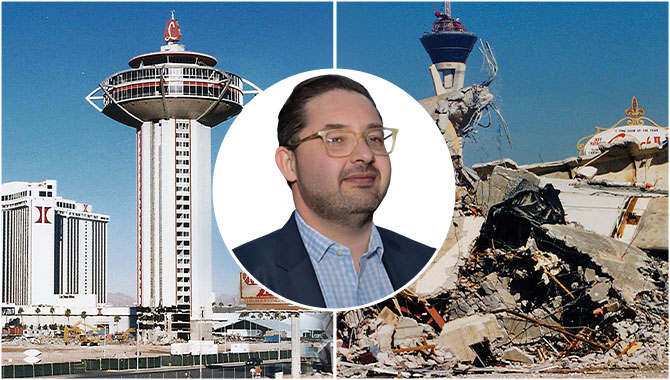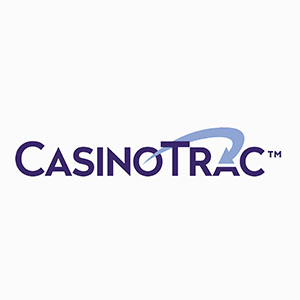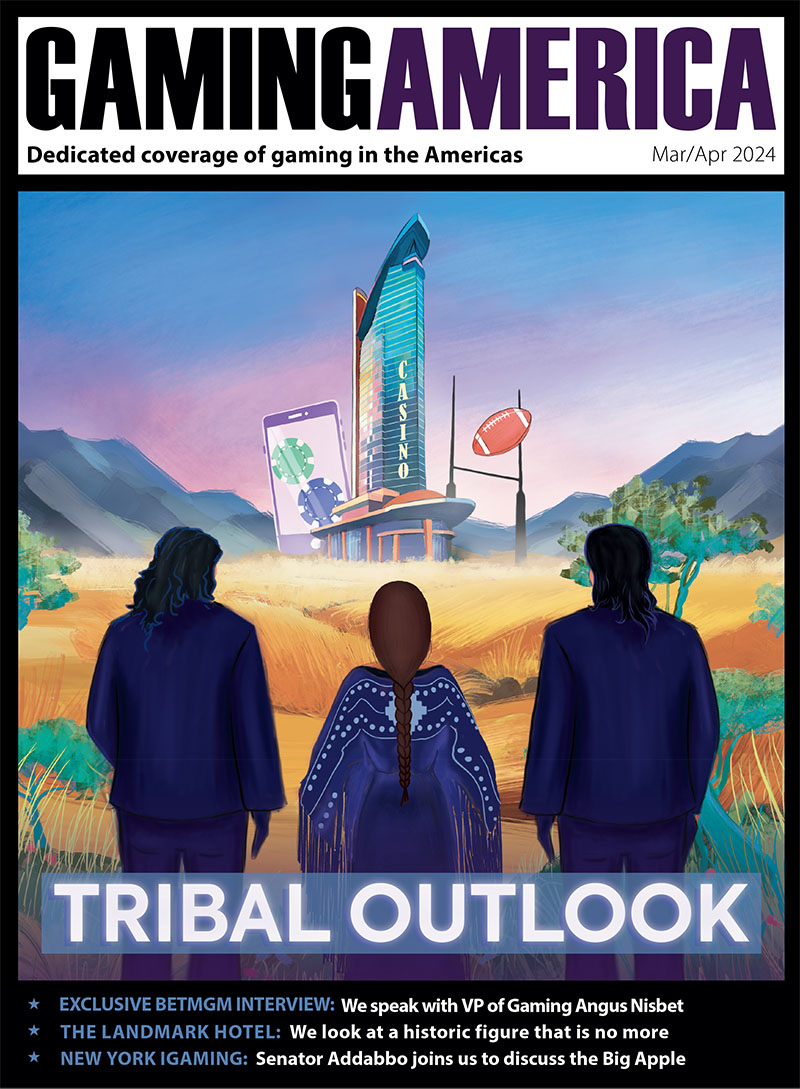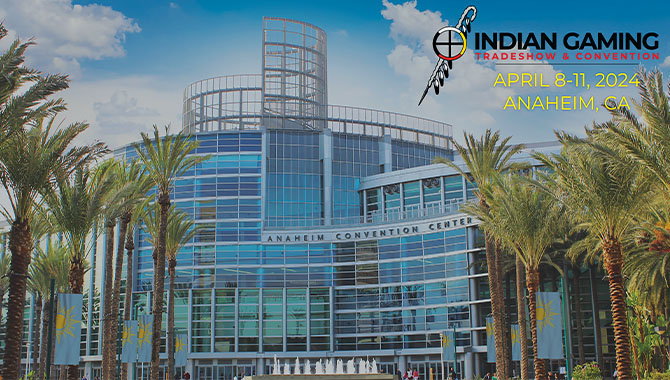
Even by the city’s standards for implosion and renewal, The Landmark’s 21-year run was short and barely touched the wider cultural resonance of other “Golden Age” Las Vegas icons. Today, The Landmark’s location is marked by a newly restored neon sign, serving as a footnote in the evolution of the city. But it is more than that. Landmark’s experience offers vital but often-forgotten lessons for those in casino management, operations and development.
Towering troubles
The full story of The Landmark is told in Marc Wagner’s superbly illustrated paean, “Above Them All,” which for those interested in a detailed historical narrative of the property is essential reading. Wagner traces the origins of the property to Kansas City Contractor, Frank Caroll (anglicized from Caracciolo). Caroll’s wife Sue was a niece of Kansas City mobster, Joe DiGiovanni. In 1960, as he sought funding for his project, Caroll and his partner, Sheldon Sandler, acquired a plot opposite the newly constructed Las Vegas Convention Center and built a typical low-rise apartment complex and strip-mall, with plans to build an architectural novelty; a resort with a “sky” level casino and entertainment complex atop a 328ft, 31-story tower. It was to be the tallest building in Nevada.
Caroll broke ground on September 6, 1961, with an expected opening date of November 1962; but he was to encounter two problems. Firstly, the steel used for construction would not support the domed structure and, more crucially, Caroll was running out of money. By 1963, he was out of funds and construction came to a halt; The Landmark’ silent concrete shell dominated the Las Vegas skyline. A total of $5m had been spent on construction, as the property fell into foreclosure and ensuing litigation. At a time when casino financing was still at its most rudimentary stage, the property was saved by The Teamsters’ Pension fund. The Teamsters’ investments in other Las Vegas casinos had thus far proved fruitful in growing the city and a $5.5m loan to complete the construction seemed like a good investment.
The original low-rise development was demolished to enhance the surface footprint of the resort, lenders and suppliers vented concerns over unpaid bills, and Caroll continued his protracted licensing application. As 1967 became 1968, The Landmark was not yet open and heaping pressure on Caroll was Kirk Kerkorian’s new 1,000 room International Hotel, taking shape just yards from his front door. The property was in trouble again. In what seems a highly irrational move, and one that only makes sense in a show of one-upmanship against Kerkorian, Howard Hughes offered to buy the bankrupt, unopened Landmark.
For $17.3m, Hughes added The Landmark to his portfolio consisting of the Desert Inn, The Sands, The Frontier and The Silver Slipper, all of which he could see from the hotel suite that he did not leave during his Vegas sojourn. Investing a further $3m, Hughes' licensing was straightforward and, as promised, on Tuesday July 1, 1969, The Landmark opened, one day before Kerkorian’s property.
Inside the landmark
Hughes’ longtime executive, Bob Maheu, took control of operating the resort. Unlike established properties in the market, The Landmark was radically different, still based on the concepts laid out by Caroll, nearly a decade previously. Wagner writes, “The tower consisted of 29 total floors as there was no 13th or 28th. The ground floor contained the casino cage, elevator lobby and the Landmark Jewelry shop. Offices for security and accounting occupied the 2nd and 3rd floors. Guest rooms ran up the remaining floors of the octagon shaped column, floors 4 through 25. The 26th floor, in the lower part of the dome, was a maintenance level and equipment storage.
Floor 27 housed a cocktail lounge called Club 27 and two restaurants. A golden spiral staircase connected the 27th to the 29th which a 3,000 sq ft casino, a restaurant bar and showroom occupied. Above that, in the upper portions of the dome, which has the dressing rooms for the performers and a catwalk that overlooked the casino. The Skybar took up the entire 31st floor where a bar, stage and dancefloor offered a 360-degree view of the city.”
Revenues at the property were highly volatile, with monthly losses more regular than profits. Despite ongoing innovations, such as focusing on Country music and bringing the first “discotheque” style nightclub to within a casino, the property sat in the Elvis-shaped shadow of its neighbor. After Hughes’ death, the property was retained by Summa Corp, which after dealing with leaks, fires and operating challenges costing up to $500,000 per month, exited the property to Ted and Zula Wolfram’s Mark III consortium for $12.5m in 1978. Perhaps the Wolframs' most consequential decision for the Landmark was hiring attorney Jeff Silver as General Counsel and latterly Chief Operating Officer. Silver assembled a team, including a young Bill Hornbuckle from the Flamingo as hotel manager. “Everything that could be wrong at a property was wrong at The Landmark.” recalled Silver. “An example was that the thickness of the Sheetrock walls on the lower floors was half an inch, whereas the upper floors only had a quarter inch.
Consequently, when the elevator moved up and down in this 'concrete piston,' a roaring whistling noise would occur as the air pressure was forced through the closed elevator doors on each floor as it passed. Some mornings I would hear the guests in the elevator comment to each other that they didn’t realize that Vegas was so windy at night. The casino on the top floor was abandoned because the elevator capacity was too small to allow large crowds to egress after shows. There were only three elevators inside the building and a glass elevator outside the cement structure, which went from the main floor directly to the top.” The new owners invested in the property, bringing in an expansive entertainment offering by Faye Todd and launched a large-scale development plan, including 750 new rooms.
Despite not yet turning a profit, The Landmark was preparing to be a challenger in 1980s Las Vegas. Could it be that the cash-rich Wolframs were the right owners, at the right time, to finally make the Landmark a success? ... Of course not. Ted Wolfram’s fraudulent past was catching up with him; he was found to have misappropriated millions of dollars in his wider businesses, including the funds used to acquire The Landmark.
The Wolframs were out, Ted was sentenced to 20 years in prison; and the property was put in the hands of the Securities Investor Protection Corporation (SIPC, the first time a casino had been delegated to Federal Agency), with the respected Silver as trustee, charged with responsibility of meeting payroll and operating the asset. “We were firefighting from day one, and we were very lucky to keep the property open. It was made clear to me by the SIPC that if the property required additional funds, there would be none and the doors would simply close with the loss of over 700 jobs. Our team worked tirelessly to make sure we kept our head above water.
I occasionally hear from former Landmark employees who appreciated our efforts,” recalled Silver. “Immediately we sought to cut the Wolfram’s costs, especially the excessive entertainment. We cut unnecessary expenses and implemented innovative strategies to improve revenue, including a $50,000 Jackpot on our Nickel Slots. We turned it around, just, but everyday there were new challenges and problems.” Under the leadership of Silver, The Landmark, for the first and only time, turned a profit. It was this newfound success that brought William “Wildcat” Morris, an old-school Nevada attorney, and part-owner of The Strip’s Holiday Casino, to The Landmark.
He transacted the assets in October 1983 for $18.4m. Bill Morris believed The Landmark had turned the corner and with new debt raised, implemented many of Silver’s suggested modifications: most notably new entrances, the striking red exterior lighting and color, and the introduction of The Landmark’s red shining logo on the top of the tower. Maybe this time the “New Landmark” was going to get it right.
However, after Silver’s departure to the Riviera, Morris’ grand plans fell victim to the loss of financial discipline imposed during the SIPC administration, and the systemic crises facing Las Vegas; increased competition from Atlantic City, the wider economic malaise and the fallout from the MGM and Hilton fires, the latter necessitating significant structural works to bringing legacy properties in line with the new fire code.
The struggling Landmark again found itself challenged to meet its financial and legal obligations, and despite continuing a highly progressive operating strategy, featuring new shows and introducing an early loyalty program, met the 1990s with another, final bankruptcy. The property’s debt was estimated at over $48m. No suitable buyer could be identified, and, on August 8, 1990, the expanded 498-room Landmark’s doors were closed, never to reopen. Las Vegas had changed. Gone were the pleasure-seeking gamblers of the atomic age; this was now the time of 3,000-room megaresorts, providing spectacle at weekends and conventions midweek. Silver prompted LVCVA to acquire the site, as it was evident that the ever-expanding Convention Center would require further space in the future and, despite the required demolition, The Landmark plot was well located.
On November 7, 1995, the now 338ft Landmark structure was imploded, a scene immortalized in Tim Burton’s Mars Attacks! digitally enhanced to feature invading aliens destroying a Las Vegas casino. Perhaps the Landmark’s cinematic demise was more impactful than anything it achieved while operating.
A landmark experience
Based on Oscar Wilde’s dictum, “Experience is the name everyone gives to their mistakes,” there are a lot of experiences The Landmark offers to us today. From the outset, selecting location is of the highest importance. Although Caroll (and Kerkorian later) saw the attraction of developing adjacent to the new Convention Center, this was away from the established tourist center. Moreover, when seeking to attract convention customers to the property, unlike at Kerkorian’s International, the programming and amenities were not aligned with this customer at The Landmark, certainly in the initial incarnation of the property. The concrete husk of The Landmark dominated the Las Vegas skyline for nearly a decade, a symbol to all, of a stalled hope during a challenging period. Not unique in the history of the city, and certainly not a terminal impediment, but in order to reshape customer preconceptions, the property needed to open strong.
It didn’t, and the challenges to perception remained for years. While architecturally striking, casino architecture alone only has purpose to convey what goes on inside to the intended customer. The LA-based architects were not experienced with casinos or gaming customers, and Caroll deliberately wanted his resort to be “different” from the rest of the market. It may be reasonable to compare Caroll to Caesars Palace’s Jay Sarno as visionary entrepreneurs, but Caroll’s understanding of customer psychology and the gaming industry was significantly inferior. It was a clear mistake to build a casino and the majority of programming on the upper levels of the resort, one that others have subsequently also failed to heed.
Although few private gaming rooms exist on upper levels, these tend to be for select customers and, when tried, the concept of sky-casinos has repeatedly fallen short. Indeed, the success of any non-ground level amenities has been highly limited. Under Hughes’ brief ownership, there was no discernable differentiation from his other properties, other than architecture. Under both corporate portfolio ownership and later under private ownership, the question remains, why would the customer go, repeatedly, to The Landmark? Catering for a customer segment and capturing their loyalty is at the strategic heart of casino operations. As noted, tactical moves were made, but like many aspects of casino operations, these were emulated and bettered.
The most successful period of the resort was the early 1980s, when there was a clear position, being a value offering for convention customers – a clear customer and a clear proposition. But perhaps the most fundamental, most basic mistake made with The Landmark was the business model. The property was conceived with 148 rooms, although more were added later. Paired with the high operating costs associated with the structure, little passing footfall and limited revenue potential, even conceptually, The Landmark was not viable, from first to last. It was a project based on Caroll’s dreams; but for him, and every subsequent owner, it became a nightmare.
Multiple times in the story of The Landmark, the promise of what it could be did not align with the fundamentals of the business. Ultimately, those of us that work in the development of casino resorts know we are selling fantasy, spectacle and escapism, but there needs to be a hard-headed analysis of the economics and finances for development and operations of these resorts. The mistakes of The Landmark are there for all to see and its importance in the panoply of failed Las Vegas casinos is near the top, due to the multitude of mistakes, or should we say, “learnable experiences.” To those standing in the Las Vegas Convention Center Gold Parking Lot, it is easy to forget that The Landmark ever existed; but we should not forget it, lest the same costly mistakes will be repeated.
Oliver Lovat is the CEO of The Denstone Group, that offers strategic consultancy in resort development. He was faculty at City, University of London between 2012-2020 and University College of Estate Management 2010-2015. His research topics are Las Vegas Customer Behavior and The Evolution of Competitive Strategy Within Las Vegas Casino Resorts.
















